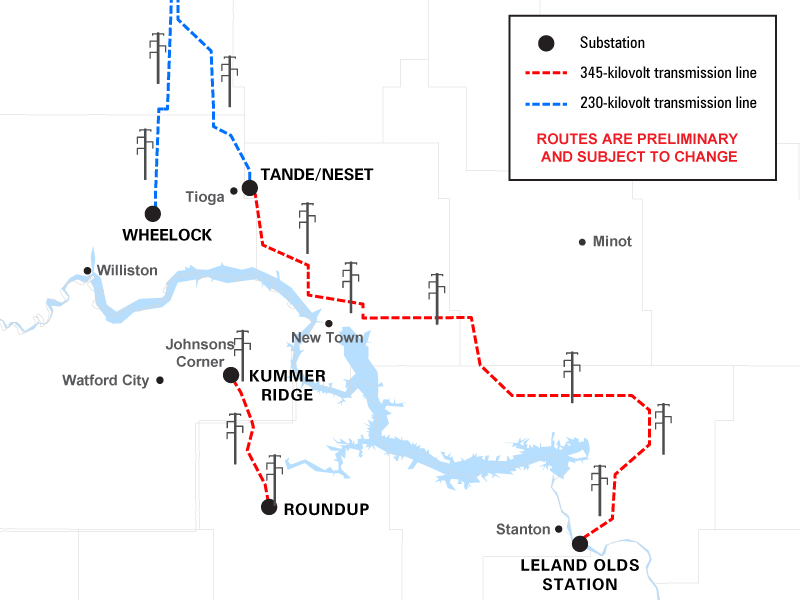- Products
- About
- Responsibility
- Environment
- News
- Contact us
- Careers
-
The first thing that might come to mind when you hear the word congestion is not being able to breathe due to hay fever or the common cold. Roadways can also be congested during a traffic jam when too many cars are plugging up the road or construction forces you to take an alternate route.
The concept is similar when referring to congestion in the energy industry – it’s the lack of ability to move electricity freely on the transmission system. “Simply put, congestion is the result of limited transmission,” says Alycia Kramer, Basin Electric supervisor of market analytics and strategy. “As more generation and load gets added to the power grid, the transmission system is running out of spare capacity, creating congestion.”
While congestion has always been present on the transmission grid, it has become increasingly problematic over the past five to 10 years as additional generation and load have come online. The buildout of wind and other generation projects, along with the addition of load, has been using up the existing margin on the grid. Insufficient transmission has been added as more generation and load is added to move the electricity generated to where it needs to go.
Find out which of the areas in Basin Electric’s service area are dealing with congestion and what that means to market prices, as well as what the co-op is doing to combat the $13.3 billion congestion is costing consumers across the country in Basin Electric experts explain transmission congestion in the spring/summer issue of Basin Today.

Dakota Gasification Company
Headquarters:
1717 East Interstate Avenue | Bismarck, ND 58503-0564 USA
701.223.0441 | 1.800.242.2372
Great Plains Synfuels Plant
420 County Road 26
Beulah, ND 58523-9400 USA
701-873-2100
A subsidiary of:
Basin Electric wants all interested and qualified candidates to apply for employment opportunities. If you are an applicant with a disability who is unable to use our online tools to search and apply for jobs, or who needs other assistance or accommodations, please contact us at 701-223-0441. Please indicate the specifics of the assistance needed or provide your contact information, and a Basin Electric Human Resources representative will contact you. Basin Electric is an Equal Employment Opportunity Employer regarding race, color, religion, sex, sexual orientation, gender identity, national origin, disability, and veterans status.